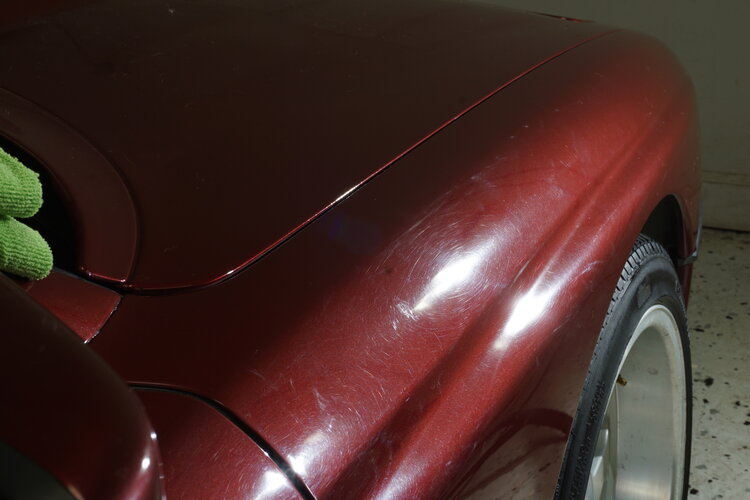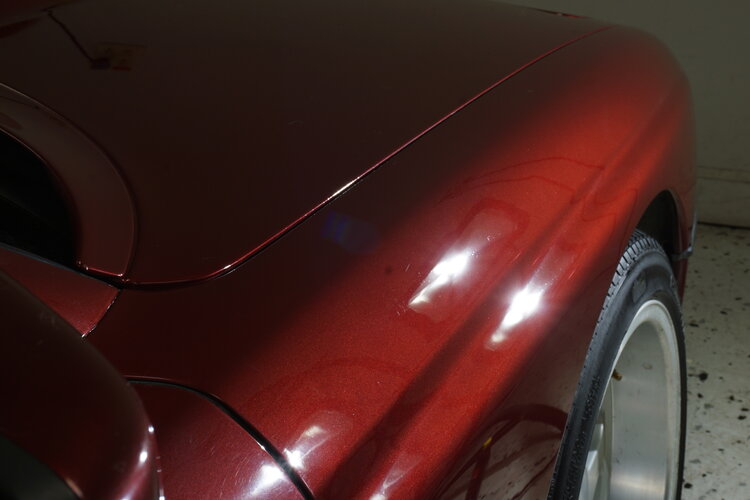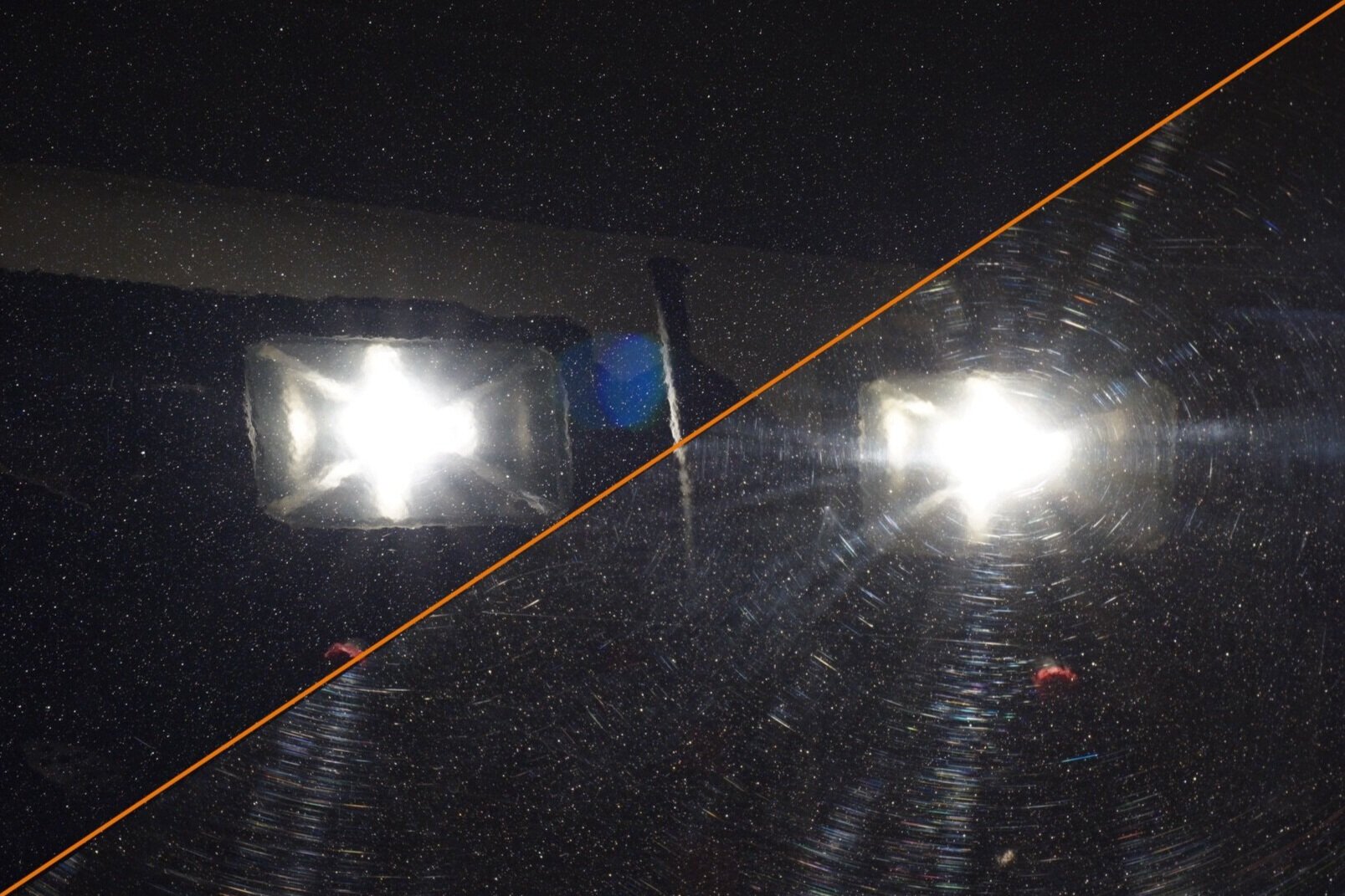All About Paint Correction
Paint Correction often goes by many names such as polishing, compounding, buffing, enhancing, etc. While each of these words have different meanings and are essentially different techniques, many people use them interchangeably. However, professional Paint Correction combines aspects of each of these different techniques in order to provide outstanding levels of gloss, color clarity, and shine to a vehicles paint work.
As an overview, the difference between our Single and Double Stage paint correction is as simple as polishing the car once versus polishing the car twice, hence the nomenclature.
However, there are very notable differences between the two processes. Below we will go in depth and explain these differences.
Preparation
Before explaining the nitty gritty of paint correction, an important point needs to be made about the step taken prior to any correction. The preparation, or “Prep”, for paint correction is very similar to that of our Exterior Premium Detail (info on that here).
The importance of prep work is to ensure there is nothing acting as a barrier between the paint surface and our correction tool. For example, dirt, tar, wax, sealant, soap residue, and even water can hinder the correction process. So, in order to rid the surface of all these contaminants we follow these steps:
Chemical Decontamination - we spray safe but dedicated chemicals onto the paint surface to break down specs such as iron fallout/brake dust, bug splatters, and road tar.
Hand Wash - using a Two Bucket Method (rinse bucket/soapy bucket) and a high quality microfiber pad, we gently wipe the surface to agitate and lift dirt, debris, and road grime, then we rinse with pressurized water.
Mechanical Decontamination - also known as “claying the paint”, a clay-bar works by peeling micro-contaminates from the pores of the outer most layer of paint: the clear-coat.
IPA Wipe - once we have dried the surface thoroughly with compressed air, we then wipe the entire vehicle with an Isopropyl Alcohol (IPA) solution. This not only ensures the paint is free of left-over water and soap residue, but it also strips away any remaining wax or sealant that may have been previously applied.
Tape - after that the paint is as clean as possible, the final step is to cover/protect any sensitive areas with masking tape. These areas can include rubber or plastic trim, glass, badges/emblems, etc.
Automotive specific masking tape is used in order to properly stick and contour to the varying shapes of plastic or rubber trim.
Double Stage Paint Correction
If you’re looking for night-and-day results, this is going to be the ideal procedure. The goal of this services is to correct as many scratches, swirls, and imperfections as possible while using a dual-action polisher. We usually strive for removal of 85-95% of scratches and imperfections, with the last few percent being either too deep to safely correct or require the use of wet sanding (we do not offer wet sanding as a service, if you would like more information, please give us a call).
The first stage of this correction is the Compounding Stage. Compound is a liquid/paste like substance mixed with heavy-duty abrasives and is often paired with an aggressive pad such as a microfiber or wool. The combination of an aggressive pad and compound is designed to quickly shave away thin layers of clear coat to effectively remove deep scratching. However, because this step is so invasive by nature, it typically leaves behind very light, micro-marring usually referred to as “haze”. To the untrained eye, this marring can be nearly impossible to spot, nevertheless it can cause the paint to have a dull or faded appearance. Thankfully, haze is easily remedied; queue stage two!
The second stage of the Double Stage Paint Correction is the refining stage. The purpose of this step is to further enhance the finish and remove the haze left over from the compound. In this step, we use a softer polishing pad (usually foam) and a polishing liquid rather than a compound liquid. Polish liquid is very similar to compound except that the infused abrasives are much less aggressive and therefore have less deep-cutting ability. This combination of soft pad and mild abrasive drastically increases the gloss by removing the haze and leaving behind nothing but a mirror finish.
Single Stage Paint Correction
Our Single Stage correction is as simple as one single step of correcting over the entire vehicle, hence the name. This service is best suited for customers who want a general shine-up or very light defect removal but not ideal for a showroom finish. Another common use for the Single Stage correction is in preparation for a ceramic coating.
Generally speaking, the process is very similar to the second stage of our Double Stage correction explained above. Our go-to process is to use a soft pad (usually foam) and polishing liquid to buff the surface. However, since there is only one step in this service, we will often opt for either a slightly more aggressive pad or liquid in order to boost the amount of imperfections corrected. We tend to stray away from using very aggressive pads or compounding liquids for the purpose of sacrificing cutting ability in favor of more gloss (in example: less haze).
In terms of ceramic coating prep, a single stage polish can be ideal. When a vehicle is well taken care of or fresh from the factory, there’s often a minimal amount of scratching in need of correcting. What these vehicles will have is copious amounts of waxes or sealants applied by the dealership or by the customer through their years of ownership. Even though we do a thorough decontamination prior to coatings, it might not be enough to break through the various layers of product. Thats where a single stage correction comes in. Since the polishing is abrasive, this acts and a deep cleaning method to strip the surface of all product down to the bare clear coat. This will ensure that nothing is in-between the clear coat and the ceramic coating.
Do you want to know how we can transform your vehicles paint?
Summary
In essence, a Double Stage correction is an aggressive correcting method followed by a gentle method whereas the Single Stage correction is simply the gentle method. The current condition of your paint and your overall goal for gloss and shine will determine which service is necessary for you.
Everyone’s situation is different and no matter how much learning you try to do, you may still be left with unanswered questions. If thats the case, give us a call or come visit our shop. We would be more than happy to assess the situation, discuss your expectations, and formulate a strategy to best fit your needs.




